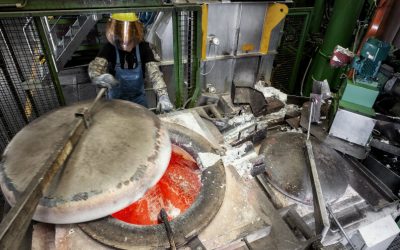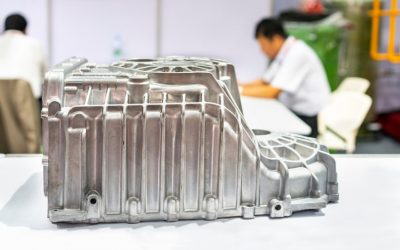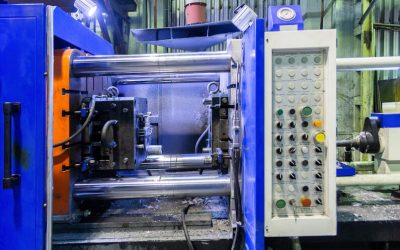Determining the best casting process to use for manufacturing your next cast aluminum part can be challenging. While there are many methods and variants to choose from, two of the most commonly used processes are die casting and sand casting.
These metal casting processes both offer a wide range of benefits to the manufacturer, which can make it difficult to choose one over the other without detailed knowledge of their qualities. Luckily, this article will help you understand the main differences between these processes, and help you choose the one that best suits your project.
Table of Contents
Defining Sand Casting and Die Casting
While we’ve discussed the many features and benefits of aluminum die casting in articles before, we haven’t covered sand casting as extensively. These processes are fundamentally similar in their basic principle: a mold cavity that reflects the desired shape of the final product is filled with molten metal which then solidifies into the final part. However, they are differentiated by the material used for the mold and the means for filling the mold with molten aluminum.
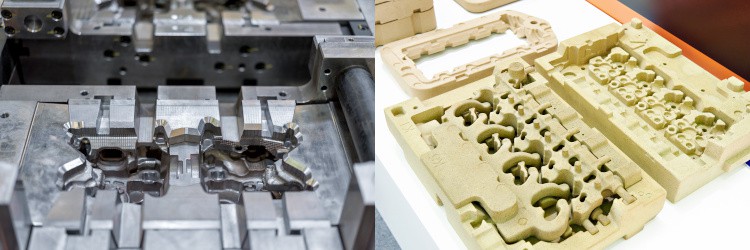
Left: Die Casting Mold, Right: Sand Casting Mold
In sand casting, the molds are made out of sand. Sand casting molds are formed by using a pattern and applying force to compact sand in the desired shape. When the pattern is removed, a cavity is left in the packed sand. Molten metal can then be gravity poured into the cavity and allowed to cool until it solidifies. Finally, the cast is removed from the sand mold and brushed to remove adhered sand.
On the other hand, die casting molds, known as dies, are made from machined steel and are reusable. Molten aluminum is typically injected between these dies under pressure from a horizontal position.
Die Casting vs Sand Casting – Key Differences
While these processes are relatively similar overall, the distinct differences in mold material and filling method have major implications on manufacturing efficiency and final product properties.
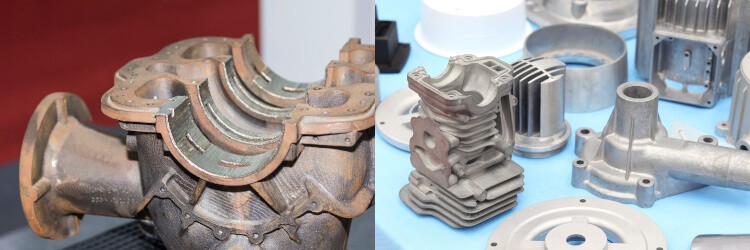
Left: Sand Cast Part, Right: Die Cast Parts
Startup Time
Firstly, the startup time for these processes can be vastly different. Sand molds can be made very rapidly if the desired pattern is already at hand. Making a steel die for die casting, however, takes longer since it needs to be designed, machined, tested, and affixed to the equipment, which can be very time-consuming.
The setup and required machinery for die casting also mean much larger upfront costs than sand casting. The investment in die casting equipment generally only makes sense for higher production volumes.
Surface Finish
Another difference between sand casting and die casting is the surface finish of castings made from these methods. Sand casting leaves behind rough surfaces on parts because the compacted sand imprints its texture onto the cast. Specialized sands and other measures can reduce roughness, but this comes with extra cost. Die cast products, however, boast a very high-quality surface finish due to both the smoothness of the die’s inner walls and the pressure used to fill the die. Note that designed textures can also be added to die cast parts if desired.
Complexity of Parts
While both methods can create complex part shapes, die casting is often the preferred process for these types of casts. Thanks to pressure injection of the molten aluminum, die casting can make components with very thin walls. The pressure injection also leads to greater dimensional accuracy for cast parts relative to sand casting.
The following table summarizes the key differences between sand and die casting.
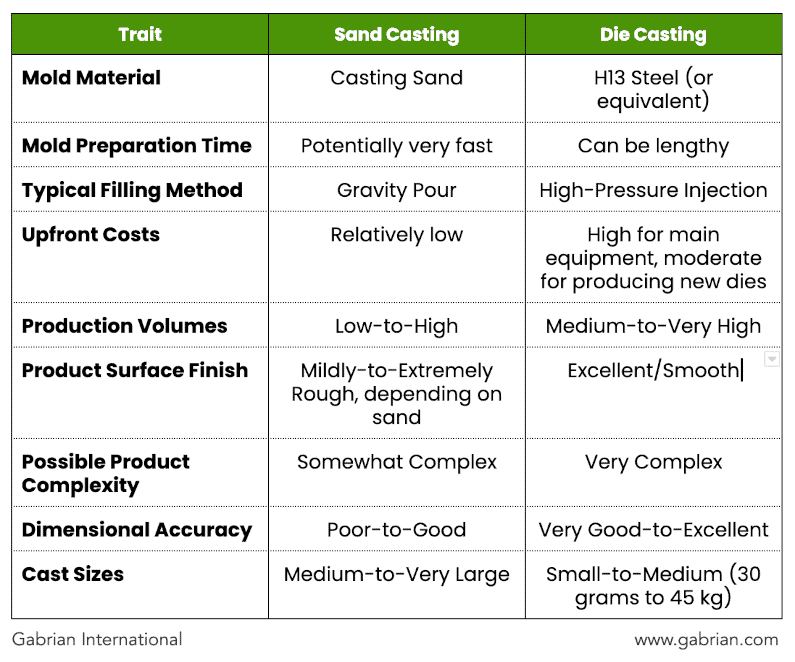
Which Process is Better for My Project?
Deciding which of these two casting processes is better for you ultimately depends on the qualities of the part you need to make and how many of them you want. For producing complex, small-to-medium-sized parts with high dimensional accuracy and a smooth surface finish, die casting is a clear winner. If a fast turnaround, a restrictive budget, or very large-sized parts define your project, then sand casting could be more suitable.
Sand casting is widely used to cast automotive engine blocks and pistons, bushings and bearings, aluminum furniture, as well as hydraulic and pneumatic components. Die casting, on the other hand, excels at making intricate machine and automotive parts, small toys, medical devices, and electrical and electronic components.
To see if die casting is the right process for your next project, check out our die casting services page. Our experts are happy to lend their experience and help you understand how to make your die casting project successful.

